Want to know are there snakes in Hawaii to be careful for your next trip? It isn’t fair to say that snakes are Hawaiian natives but it does have certain species because of stowaways, travel, and smuggling.
Did you know that having a pet snake in Hawaii is illegal? Hawaii is a beautiful isolated island with no predators. Hence, snakes can cause disbalance in the environment.
If you are found with a snake, the government will fine you $200,000 and lock you up for three years of vacation in jail.
Hawaiian law is very strict regarding the illegal smuggling of snakes. Hence, you may not encounter any snakes during your stay in Hawaii.
Snakes are found everywhere in this world and Hawaii is no exception. It only depends on how frequently you encounter them. Finding snakes is scary especially if they are sleek and tiny.
Are there venomous snakes in Hawaii? Sadly, yes. There is one sea snake with a yellow belly that can paralyze you with its sting.
Planning a vacation including wildlife adventures could be a little concerning because snake bites can be dangerous.
In this article, you will learn about Hawaiian snakes and some preventive measures to help you escape a snake encounter. So, let’s dig in and learn more about it.
Table of Contents
Most common snakes in Hawaii
Since there are snakes in Hawaii, here is the top five you might be able to spot:
Brahminy Blind Snake
This one is one of the most common snakes that you may find in Hawaii. This blind snake is about 6.5 inches tall and might look like an earthworm.
It has a very slim structure with a mixture of colors. The Brahminy blind snake has a mix of charcoal, grey and purple colors with a brown or grey underbelly.
Do you know the most interesting part about these snakes? They don’t need mating for reproduction.
Brahminy snake is parthenogenic. The reproduction happens too quickly. But these species love human backyards and gardens. Like most snakes, even they like dampened leaves, soils and logs.
But you need not worry about this as it poses no danger to humans. So don’t be scared. These snakes are here to help you with ants and termites.
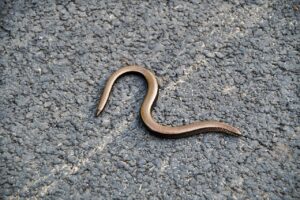
Boa Constrictor
This exotic species is identified by its muscular and heavy bodies. They are mostly found in multiple colors ranging from green, brown and black with distinctive patterns.
Boa constrictors are generally found with triangular heads, which are non-venomous. However, these snakes can be about 9ft long. These big creatures may not harm you because they aren’t venomous but are dangerous to many other animals.
As per the study, these species were spotted in Nuuanu, Pali highway and at the Honolulu crosswalk. Since these are exotic species, they are mostly escaped pets. The boa constrictor is active species that feed on different varieties of mammals and birds.
These are mostly terrestrial but can climb onto trees to feed on birds. Did you know why it has constriction attached to its name? This is because of the way it attacks its prey by constriction.
Boa constrictors will grasp their prey first and then use their coils to put pressure and kill. Earlier, these were used to control the rodents near the fields to protect the crops.
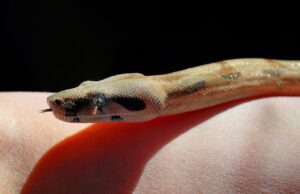
Brown Tree Snakes
This particular snake is something you shouldn’t be encountering in Hawaii. These cat-eyes snakes are Hawaii’s most venomous snakes. Hence if you are thinking whether are there poisonous snakes in Hawaii, then the answer is yes. However, there have been only eight encounters between 1981-1998.
Brown tree snakes are native to only islands that are present between the Pacific and Indian Oceans. They tend to enter Hawaii by way of shipments. Also, these species need a lot of food for their existence. As per the study, this snake can eat about 70% of its body weight every day.
Ball Pythons
This snake specie has a big head with a diamond-like pattern on its body. Like Boa Constrictors, these snakes also constrict their prey and attack them.
There’s a lot of action prior to their consumption. For example, blood flow, breaking bones, etc. They may not harm you, but they are dangerous for the ecosystem around them. However, these are African natives and the smallest African pythons.
Wondered why it is called a ball python? It is because of its nature to curl up like a ball when frightened or stressed.
It is called the ‘royal python’ because, in ancient times, African rulers like Cleopatra would wear the snake as jewelry. The Ball pythons have smooth scales, and their pattern is brown and gold, which surely looks like a nice neckpiece.
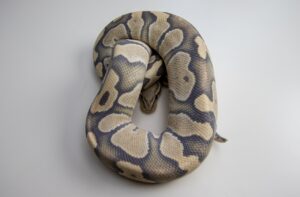
Corn Snake
These snakes are also known as red rat snakes, which are slender and have red blotches behind their back with black outlines. They even have markings like a checkerboard.
The name corn snake has been given to this specie because of their patterns which looks like corn or maize. Now the color variation depends on their geographic region and age group.
As they grow, their markings and color become more prominent and brighter. These full-grown snakes are about 180 centimeters long.
Another fact about corn snakes is that they don’t need food daily. They can live for a couple of days without food.
The younger ones may live on frogs and lizards, while the bigger ones may feed on bats, birds and rats.
These are nocturnal animals that stay active during the night mostly. Hence keep your eyes open and look for red spots and orange bodies that may be wandering during the night.
You have nothing to worry about in Hawaii. Their existence has been rare there, however, if you do spot one, you must inform the responsible authorities. These do not harm humans unless instigated.
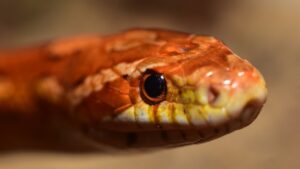
Are there poisonous snakes in Hawaii?
By now you have the answer to are there snakes in Hawaii. But how many of them are deadly for humans? Let’s find out:
Yellow-Bellied Sea Snake
Wondering are there sea snakes in Hawaii? Well, this creature is one of the most poisonous sea snakes in Hawaii. The snake we list here is almost similar to the Hawaiian native snake.
The yellow-bellied sea snake mostly stays in the sea and has no records of attack in Hawaii. These are very shy and often try to hide away from their predators.
The Yellow-bellied Sea Snake has a very distinct character and feature which never sets scale on the sea floor or land.
Their color combination is a mixture of brown, blue, yellow and black. Looking at it closely, you will see the color pattern. The dark shade starts from the head and eventually gets lighter.
The tail of this snake is a shape of a paddle and is yellow in color. If you ever get to look into their eyes (which I hope you don’t), you will see the beautiful blueish-black shade.
The good part is they are very slow in biting. Hence if you ever get encountered, escape and get the authorities notified. But God forbid if you get the sting, you must seek treatment immediately.
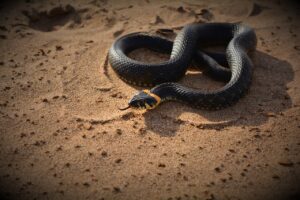
Brown Tree snake
This is one of the most dangerous snakes in Hawaii, which is why the Hawaiian authorities have diligently tried to eradicate it completely.
As of now, these snakes are only present in Hawaii for training purposes and nothing else. However, these creatures are very adventurous and sly in nature. Hence you must keep yourself alert during your stay.
It is also said that back in the 1940s, these snakes had become a threat in the Guam region of Hawaii, where most of its species got extinct.
The size of these snakes could range up to 6 ft and can reproduce from the age of three. They mostly feed on birds, birds, reptile eggs, rats, lizards, and domestic animals.
Did you know that these dangerous species have been the reason for the extinction of three lizards and nine forest bird species? Even the seabirds like shearwaters, terns and noddies are not present in Hawaii anymore.
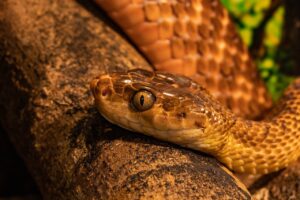
Safety measures that you must know when in Hawaii
There are snakes in Hawaii but their prevalence is rare. This, in turn, means that you have little chances to have a snake encounter, even if you are going into wild forests. However, here are some things you should know to keep yourself safe during your trip.
What to do when you see a snake?
Always remember that snakes in Hawaii are illegal, so do not even think of keeping them as a pet. They are illegal, and you obviously don’t want to pay a hefty fine or spend a three years holiday in jail.
As you see a snake, inform the authorities immediately so that they can get it removed to a safer place. Contact the Hawaii Department of Land and Natural Resources – Division of State Parks to get the snake removed.
Is it ok to stay with them?
If you think that some snakes are harmless and you can coexist, well, you cannot. The most common snakes of Hawaii are the Yellow-bellied sea snakes and Brahminy blind snakes.
To escape the yellow-bellied ones, you must avoid swimming in dense waters. The Brahminy ones are quite harmless. Hence, keep an eye and inform the authorities to get them removed.
Can you kill a snake if you see one?
Obviously, you cannot, and you should not. Firstly, killing a snake is not ethically correct and secondly you might hurt yourself.
As you see a snake, you need to ring the wildlife commission. They can help these creatures with a habitual environment and keep your ecosystem safe. However, if you have to kill as self-defense, make sure you are careful, as snakes can be aggressive.
Some venomous snakes can even kill you with their sting. If you ever get attacked, get help immediately.
Contacts for handling snake bites in Hawaii
In case you or someone you know gets a snake bite, you must call on the below helpline number for quick assistance:
- ASPCA Poisoning Hotline: 1-888-426-4435
- Poison Control Center’s national hotline: 1-800-222-1222
Some safety tips that can save you from snake bites
- You must wear proper shoes while you or your group member are going hiking. Make sure your feet are fully covered and are sturdy.
- When you are with kids, it is better to avoid overgrown areas because they are more prone to these slimy creatures. So, to avoid any such encounters, don’t take ‘the road not taken’. Stick to the common paths that are used by all.
- Do not let your kids or pets wander by themselves. Keep them close to you.
- Avoid deep sea swimming. The yellow-bellied snakes are very poisonous and mostly underwater.
- Keep the numbers handy. Make a note of the important contacts that you may require as you encounter a snake.
- Call for help and have snakes removed immediately. Do not try it yourself as it might be life-threatening.
Final Thoughts
As we come to the end of this article, I hope you know what precautions you can take when in Hawaii. You also know are there snakes in Hawaii and how they can or cannot harm you. Just follow the precautionary measures while you are at your stay, and you are good to explore this beautiful island that has so much to offer.




























